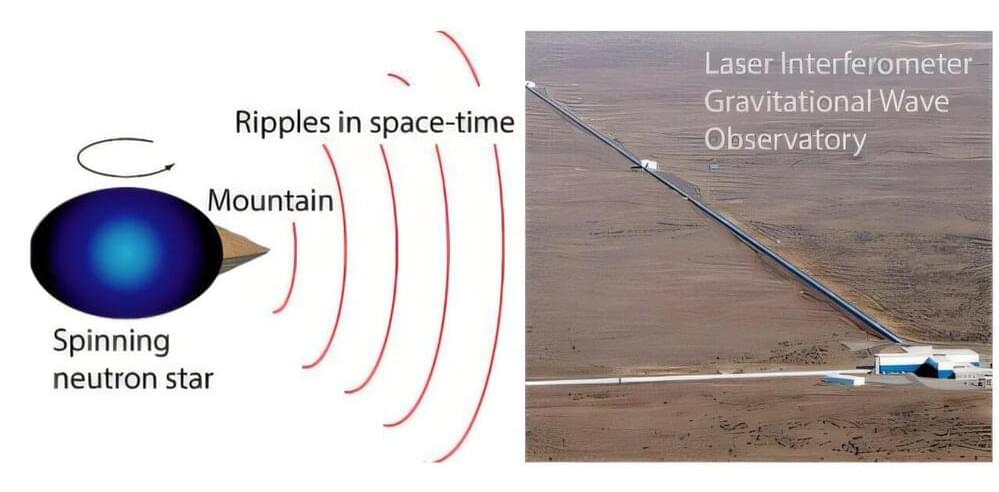Collapsed dead stars, known as neutron stars, are a trillion times denser than lead, and their surface features are largely unknown. Nuclear theorists have explored mountain building mechanisms active on the moons and planets in our solar system. Some of these mechanisms suggest that neutron stars are likely to have mountains.
Neutron star “mountains” would be much more massive than any on Earth—so massive that gravity just from these mountains could produce small oscillations, or ripples, in the fabric of space and time.
Mountains, or non-axisymmetric deformations of rotating neutron stars, efficiently radiate gravitational waves. In a study published in the journal Physical Review D, nuclear theorists at Indiana University consider analogies between neutron star mountains and surface features of solar system bodies.
